Dynamic Experimental Study on Treatment of Acid Mine Drainage by Bacteria Supported in Natural Minerals
Abstract
1. Introduction
2. Material and Methods
2.1. Experimental Materials
2.2. Experimental Apparatus and Method
2.3. Water Quality Detection Methods
3. Results and Discussion
3.1. Analysis of the Change of pH and Oxidation Reduction Potential (ORP)
3.2. Analysis of the Removal Effect of SO42−
3.3. Analysis of the Removal Effect of Fe2+
3.4. Analysis of the Removal Effect of Mn2+
3.5. Analysis on Release of Chemical Oxygen Demand (COD)
3.6. Instrumental Analysis
3.6.1. Scanning Electron Microscopy/Energy-Dispersive X-Ray Spectroscopy (SEM/EDS) Analysis
3.6.2. X-ray Diffraction (XRD) Analysis
4. Conclusions
Author Contributions
Funding
Acknowledgments
Conflicts of Interest
References
- Betz, M.R.; Partridge, M.D.; Farren, M.; Lobao, L. Coal mining, economic development, and the natural resources curse. Energy Econ. 2015, 50, 105–116. [Google Scholar] [CrossRef]
- Fan, C.; Elsworth, D.; Li, S.; Chen, Z.; Luo, M.; Song, Y.; Zhang, H. Modelling and optimization of enhanced coalbed methane recovery using CO2/N2 mixtures. Fuel 2019, 253, 1114–1129. [Google Scholar] [CrossRef]
- Xia, D.; Han, Y.; Xie, Y.; Yang, C.; Chen, M.; Dang, Z.; Yi, X.; Lu, G. Isotope geochemistry, hydrochemistry, and mineralogy of a river affected by acid mine drainage in a mining area, South China. RSC Adv. 2017, 7, 43310–43318. [Google Scholar] [CrossRef]
- Skousen, J.; Zipper, C.E.; Rose, A.; Ziemkiewicz, P.F.; Nairn, R.; McDonald, L.M.; Kleinmann, R.L. Review of Passive Systems for Acid Mine Drainage Treatment. Mine Water Environ. 2017, 36, 133–153. [Google Scholar] [CrossRef]
- Hwang, S.K.; Jho, E.H. Heavy metal and sulfate removal from sulfate-rich synthetic mine drainages using sulfate reducing bacteria. Sci. Total Environ. 2018, 635, 1308–1316. [Google Scholar] [CrossRef]
- Akcil, A.; Koldas, S. Acid Mine Drainage (AMD): Causes, treatment and case studies. J. Clean. Prod. 2005, 14, 1139–1145. [Google Scholar] [CrossRef]
- Yang, Y.; Chen, T.; Li, P.; Xie, Q.; Zhan, X. Cu Removal from Acid Mine Drainage by Modified Pyrite: Batch and Column Experiments. Mine Water Environ. 2016, 36, 371–378. [Google Scholar] [CrossRef]
- Jiang, F.; Sun, R.; Liang, Z.; Hong, Y.; Wu, D.; Wang, J. Research Progress on the Treatment of Acid Mine Drainage by Sulfate-Reducing Bacteria. J. South China Norm. Univ. (Nat. Sci. Ed.) 2018, 50, 1–10. [Google Scholar]
- Dong, Y.; Di, J.; Wang, M.; Ren, Y. Experimental study on the treatment of acid mine drainage by modified corncob fixed SRB sludge particles. RSC Adv. 2019, 9, 19016–19030. [Google Scholar] [CrossRef]
- Zhang, M.; Wang, H. Preparation of immobilized sulfate reducing bacteria (SRB) granules for effective bioremediation of acid mine drainage and bacterial community analysis. Miner. Eng. 2016, 92, 63–71. [Google Scholar] [CrossRef]
- Di, J.; Li, T.; Zhao, W. Treatment acid mine drainage by sulfate reducing bacteria using different biomass carbon sources. J. China Coal Soc. 2019, 44, 1915–1922. [Google Scholar]
- Yan, P.; Ma, Z.; Gao, Y. The Primary Research of Fuxin Maifan Stone Mineral Resources. China Non-Met. Min. Ind. Her. 2008, 2, 10–12, 16. [Google Scholar]
- Li, H.; Li, J.; Hou, C.; Du, S.; Ren, Y.; Yang, Z.; Xu, Q.; Hu, X. A sub-nanomole level electrochemical method for determination of prochloraz and its metabolites based on medical stone doped disposable electrode. Talanta 2010, 83, 591–595. [Google Scholar] [CrossRef] [PubMed]
- Awasthi, M.K.; Wang, Q.; Awasthi, S.K.; Li, R.; Zhao, J.; Ren, X.; Wang, M.; Chen, H.; Zhang, Z. Feasibility of medical stone amendment for sewage sludge co-composting and production of nutrient-rich compost. J. Environ. Manag. 2018, 216, 49–61. [Google Scholar] [CrossRef]
- Gao, G.; Lei, Y.; Dong, L.; Liu, W.; Wang, X.; Chang, X.; Liu, T.; Yin, Y.; Ajayan, P.M. Synthesis of Nanocomposites of Silver Nanoparticles with Medical Stone and Carbon Nanotubes for Their Antibacterial Applications. Mater. Express 2012, 2, 85–93. [Google Scholar] [CrossRef]
- Yan, X.; Wang, B.; Zhang, J. Liquefaction of cotton seed in sub-critical water/ethanol with modified medical stone for bio-oil. Bioresour. Technol. 2015, 197, 120–127. [Google Scholar] [CrossRef]
- Wang, Q.; Wang, Z.; Awasthi, M.K.; Jiang, Y.; Li, R.; Ren, X.; Zhao, J.; Shen, F.; Wang, M.; Zhang, Z. Evaluation of medical stone amendment for the reduction of nitrogen loss and bioavailability of heavy metals during pig manure composting. Bioresour. Technol. 2016, 220, 297–304. [Google Scholar] [CrossRef]
- Di, J.; Wang, M.; Zhu, Z. Experiment on the treatment of acid mine drainage with optimized biomedical stone particles by response surface methodology. Environ. Sci. Pollut. Res. 2018, 25, 7978–7990. [Google Scholar] [CrossRef]
- Jiang, F. Bioremediation of Acid Mine Drainage using immobilized SRB sludge with inner cohesive corncob in a Permeable Reactive Barrier. Master’s Thesis, Liaoning Technical University, Fuxin, China, 2015. [Google Scholar]
- Sun, H.; Sheng, S.; Yang, Z.; Liu, H.; Jiao, X.; Wan, A. Analysis of Black-odor Factors of Lake Sediment and Elimination Strategies of Key Factor. Environ. Sci. Surv. 2019, 38, 12–20. [Google Scholar]
- Hao, T.W.; Xiang, P.Y.; Mackey, H.R.; Chi, K.; Lu, H.; Chui, H.K.; van Loosdrecht, M.C.; Chen, G.H. A review of biological sulfate conversions in wastewater treatment. Water Res. 2014, 65, 1–21. [Google Scholar] [CrossRef]
- Hwang, T.; Neculita, C.M.; Han, J.I. Biosulfides precipitation in weathered tailings amended with food waste-based compost and zeolite. J. Environ. Qual. 2012, 41, 1857–1864. [Google Scholar] [CrossRef] [PubMed]
- Wen, K.; Liu, G.; Yin, Y.; Wang, Y.; Wang, F.; Zhu, J. Process Mineralogical Study on the Maifan Stone in Qiqihar Nianzishan. J. Mineral. Petrol. 2016, 36, 1–7. [Google Scholar]
- Kikot, P.; Viera, M.; Mignone, C.; Donati, E. Study of the effect of pH and dissolved heavy metals on the growth of sulfate-reducing bacteria by a fractional factorial design. Hydrometallurgy 2010, 104, 494–500. [Google Scholar] [CrossRef]
- Chang, Y.; Chang, Y.; Hung, C.; Lee, J.; Liao, H.; Chou, H. Microbial community analysis of anaerobic bio-corrosion in different ORP profiles. Int. Biodeterior. Biodegrad. 2014, 95, 93–101. [Google Scholar] [CrossRef]
- Neufeld, R.D.; Ropelewski, L.; Acheson, M. Sewage as a Mixed Organic Substrate for Desulfurization Bacteria. Proc. Water Environ. Fed. 2012, 2012, 265–274. [Google Scholar] [CrossRef]
- Zhang, M.; Wang, H.; Han, X. Preparation of metal-resistant immobilized sulfate reducing bacteria beads for acid mine drainage treatment. Chemosphere 2016, 154, 215–223. [Google Scholar] [CrossRef]
- Barbosa, L.P.; Costa, P.F.; Bertolino, S.M.; Silva, J.C.C.; Guerra-Sá, R.; Leão, V.A.; Teixeira, M.C. Nickel, manganese and copper removal by a mixed consortium of sulfate reducing bacteria at a high COD/sulfate ratio. World J. Microbiol. Biotechnol. 2014, 30, 2171–2180. [Google Scholar] [CrossRef]
- Bijmans, M.F.; Dopson, M.; Peeters, T.W.; Lens, P.N.; Buisman, C.J. Sulfate reduction at pH 5 in a high-rate membrane bioreactor: Reactor performance and microbial community analyses. J. Microbiol. Biotechnol. 2009, 19, 698–708. [Google Scholar] [CrossRef]
- Halim, Z.; Cut, A.; Said, A. Removal and Kinetics Adsorption Fe (II) Ions in Ground Water using Sugarcane Bagasse of Various Treatments Adsorbent with Column Method. IOP Conf. Ser. Mater. Sci. Eng. 2019, 536, 012007. [Google Scholar] [CrossRef]
- Zhang, X.; Deng, L.; Fang, C.; Lei, Y.; He, C.; Gao, C.; Zhao, S.; Xiang, Y. Adsorption of Cr(VI) in Water by Maifanite Modified with Different LDHs Coatings. Environ. Sci. 2019, 40, 300–309. [Google Scholar]
- Gao, T.; Wang, W.; Wang, A. A pH-sensitive composite hydrogel based on sodium alginate and medical stone: Synthesis, swelling, and heavy metal ions adsorption properties. Macromol. Res. 2011, 19, 739–748. [Google Scholar] [CrossRef]
- Karathanasis, A.D.; Edwards, J.D.; Barton, C.D. Manganese and Sulfate Removal from a Synthetic Mine Drainage through Pilot Scale Bioreactor Batch Experiments. Mine Water Environ. 2010, 29, 144–153. [Google Scholar] [CrossRef]
- Soltan, M.E.; Sirry, S.M.; Fawzy, E.M. Evaluation of the Sorptive Capacity of Sugarcane Bagasse and Its Coal for Heavy Metals in Solution. J. Chin. Chem. Soc. 2007, 54, 1401–1412. [Google Scholar] [CrossRef]
- Yoo, K.; Sasaki, K.; Hiroyoshi, N.; Tsunekawa, M.; Hirajima, T. The Effect of Mn2+ Concentration on Mn Removal by a Sulfate Reducing Bacteria Bioreactor. Mater. Trans. 2004, 45, 2429–2434. [Google Scholar] [CrossRef]
- Jong, T.; Parry, D.L. Microbial sulfate reduction under sequentially acidic conditions in an upflow anaerobic packed bed bioreactor. Water Res. 2006, 40, 2561–2571. [Google Scholar] [CrossRef] [PubMed]
- Zhang, Y.; Hu, X.; Xia, L.; Jin, S.; Wang, Y.; Ning, P. Treating synthetic mine leaching wastewater by sulfate-reducing bacteria with sugarcane bagasse as carbon source. Chin. J. Environ. Eng. 2016, 10, 2355–2360. [Google Scholar]
- Van den Brand, T.P.H.; Roest, K.; Chen, G.; Brdjanovic, D.; van Loosdrecht, M.C.M. Effects of Chemical Oxygen Demand, Nutrients and Salinity on Sulfate-Reducing Bacteria. Environ. Eng. Sci. 2015, 32, 858–864. [Google Scholar] [CrossRef]
- Milani, P.A.; Debs, K.B.; Labuto, G.; Carrilho, E.N.V.M. Agricultural solid waste for sorption of metal ions: Part I—Characterization and use of lettuce roots and sugarcane bagasse for Cu(II), Fe(II), Zn(II), and Mn(II) sorption from aqueous medium. Environ. Sci. Pollut. Res. 2018, 25, 35895–35905. [Google Scholar] [CrossRef]
- Hai, T.A.P.; Sugimoto, R. Synthesis and characterization of poly(3-hexylthiophene)-grafted polyvinyl alcohol. Synth. Met. 2018, 240, 37–43. [Google Scholar] [CrossRef]
- Wang, Q.; Zhang, N.; Hu, X.; Yang, J.; Du, Y. Alginate/polyethylene glycol blend fibers and their properties for drug controlled release. J. Biomed. Mater. Res. A 2007, 82, 122–128. [Google Scholar] [CrossRef]
- Li, Y.; Li, B.; Du, F.; Xian, X.; Huang, H.; Tang, P. Structure and combustion characteristics of lignin from black liquor of bagasse soda pulping. CIESC J. 2017, 68, 345–352. [Google Scholar]
- Ladeira, N.C.; Peixoto, V.J.; Penha, M.P.; Barros, E.B.D.P.; Leite, S.G.F. Optimization of 6-pentyl-alpha-pyrone production by solid state fermentation using sugarcane bagasse as residue. Bioresources 2010, 5, 2297–2306. [Google Scholar]
- Flauzino Neto, W.P.; Silvério, H.A.; Dantas, N.O.; Pasquini, D. Extraction and characterization of cellulose nanocrystals from agro-industrial residue—Soy hulls. Ind. Crop. Prod. 2013, 42, 480–488. [Google Scholar] [CrossRef]
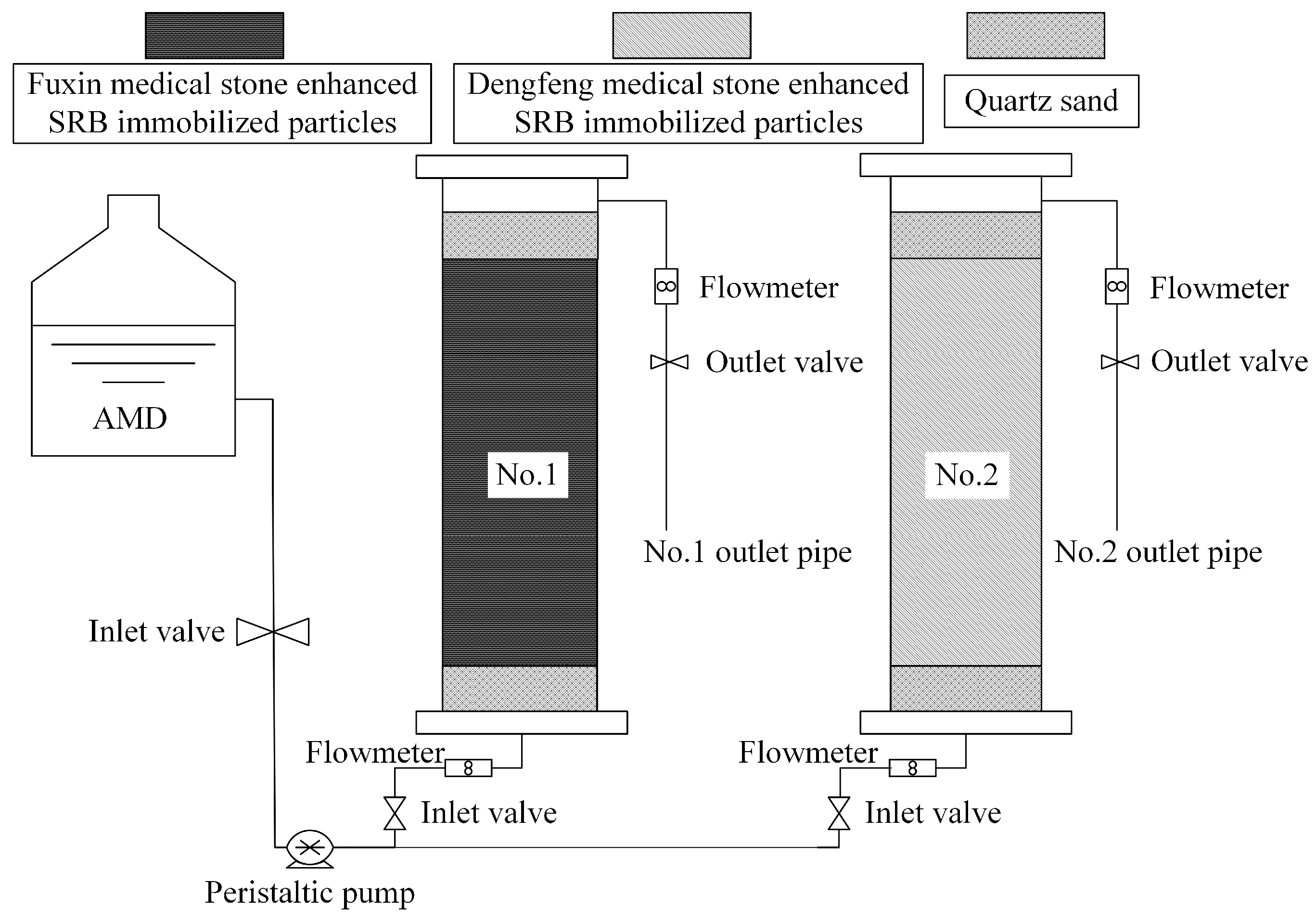
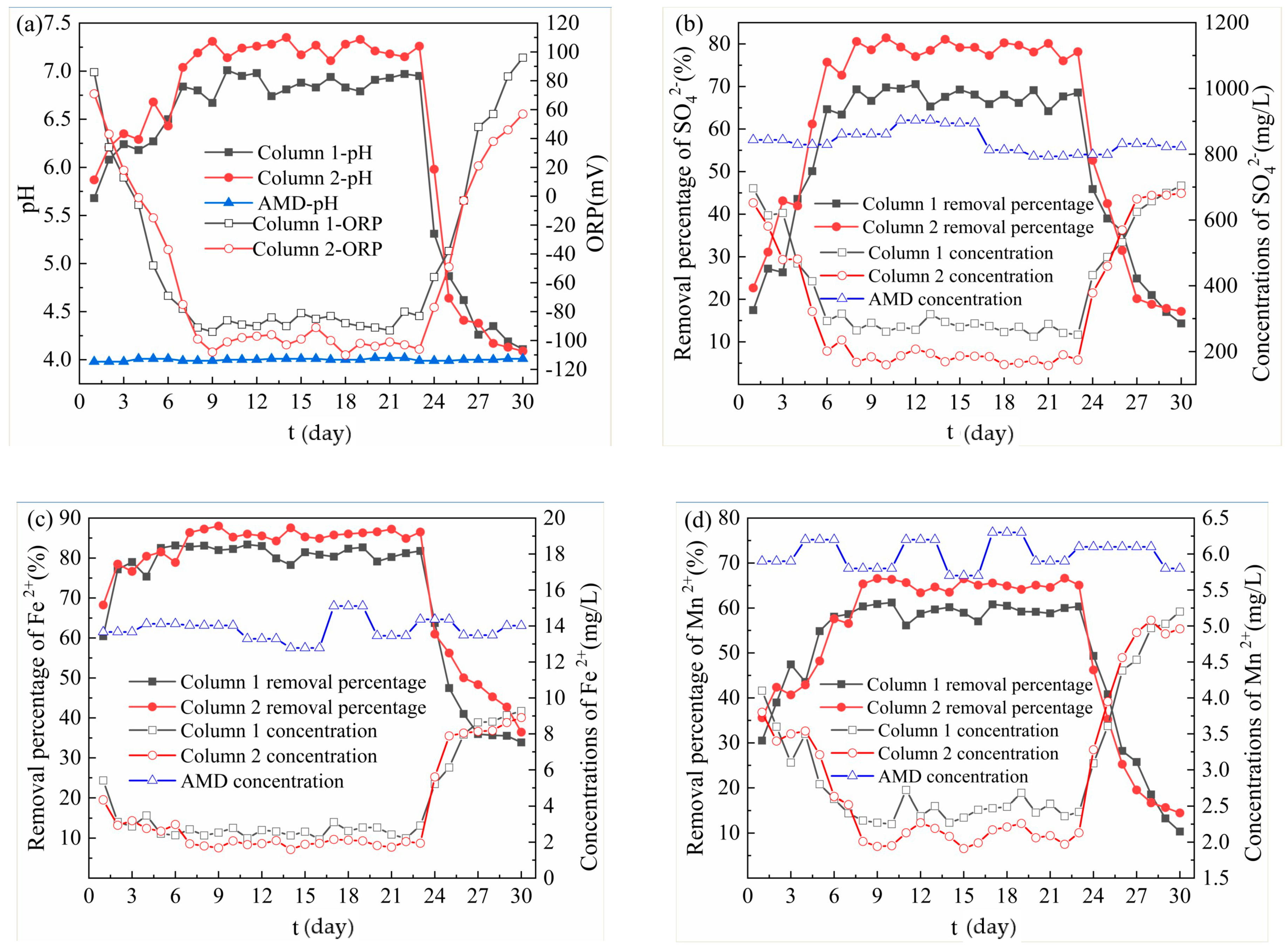
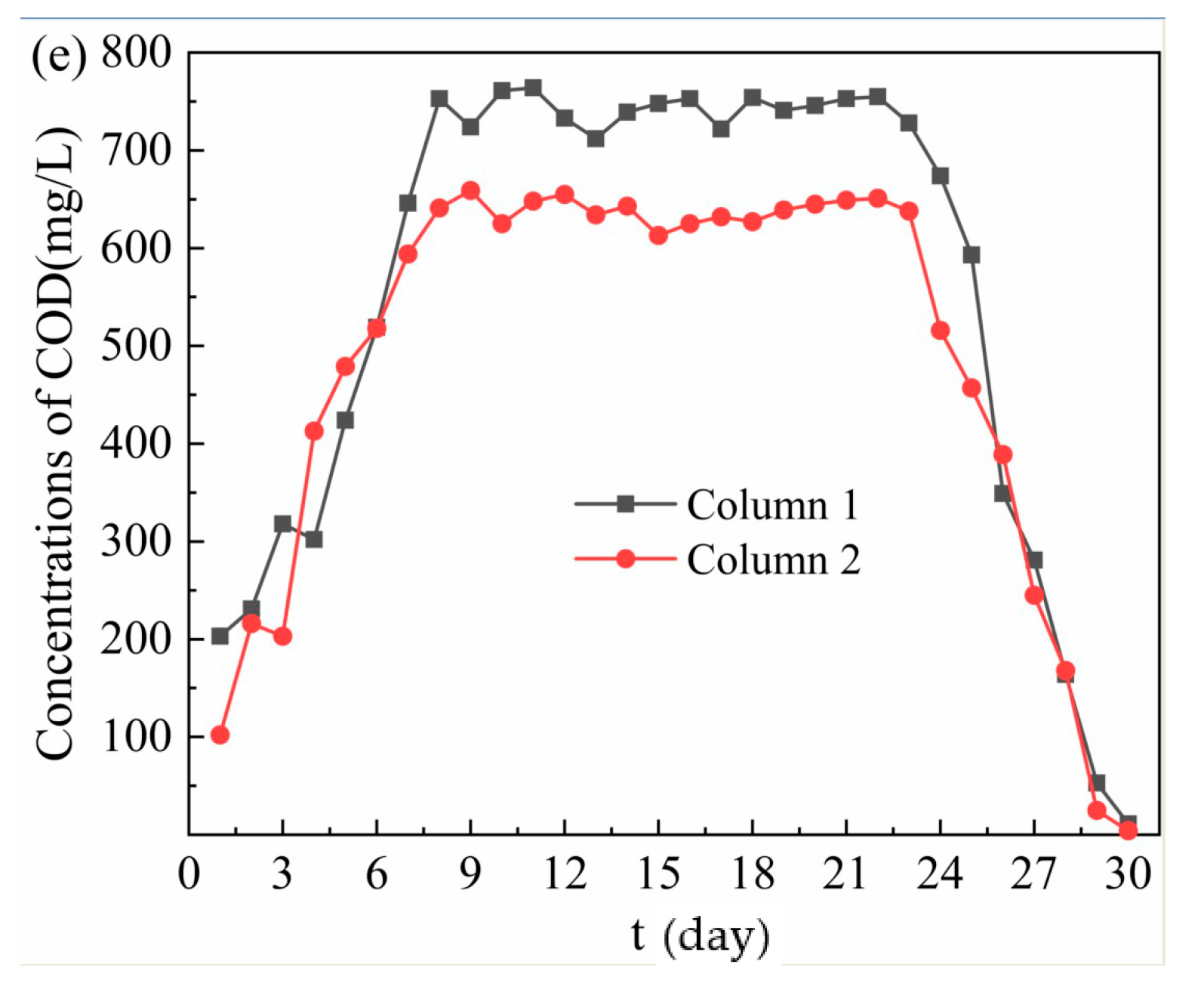
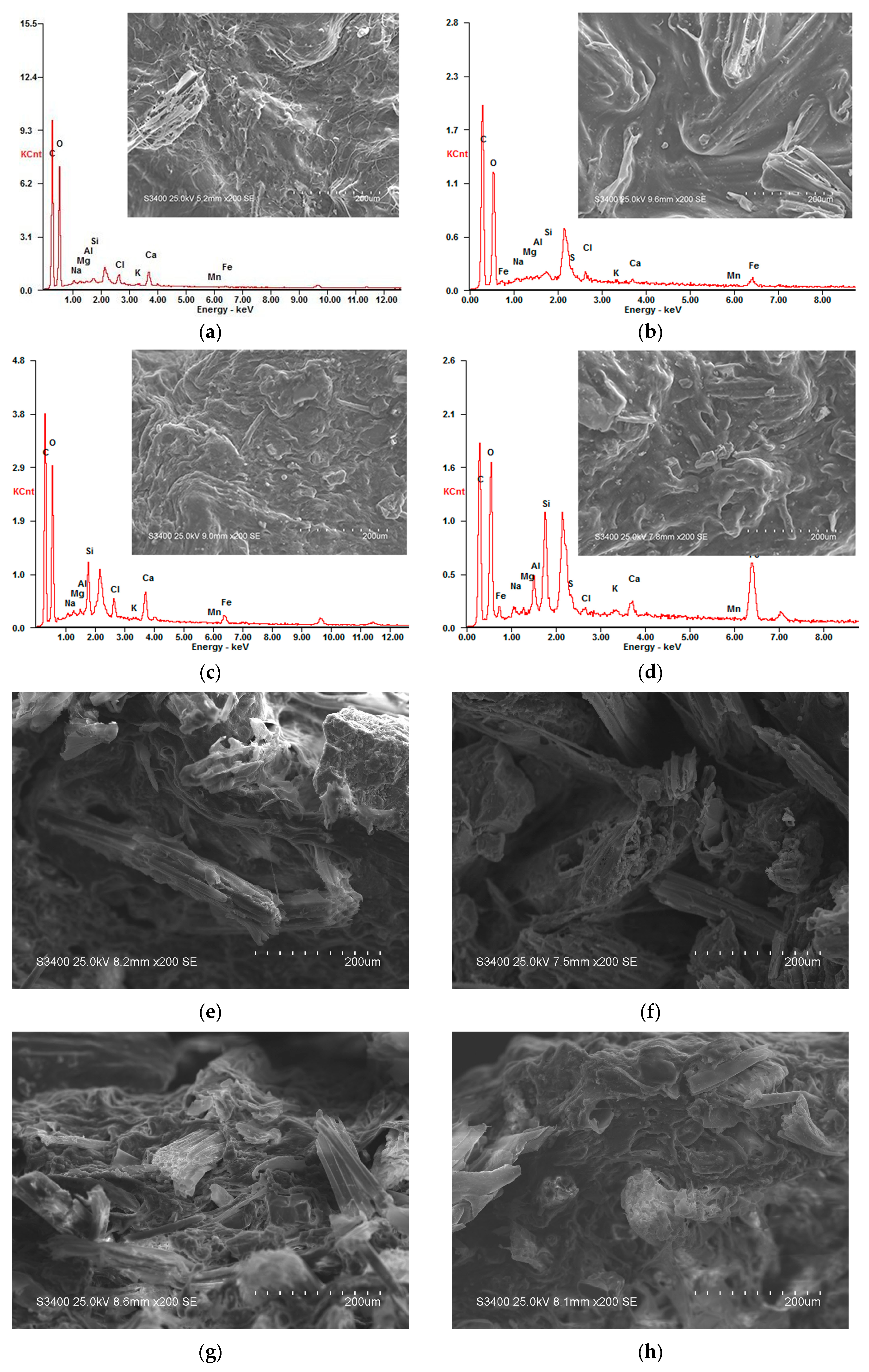
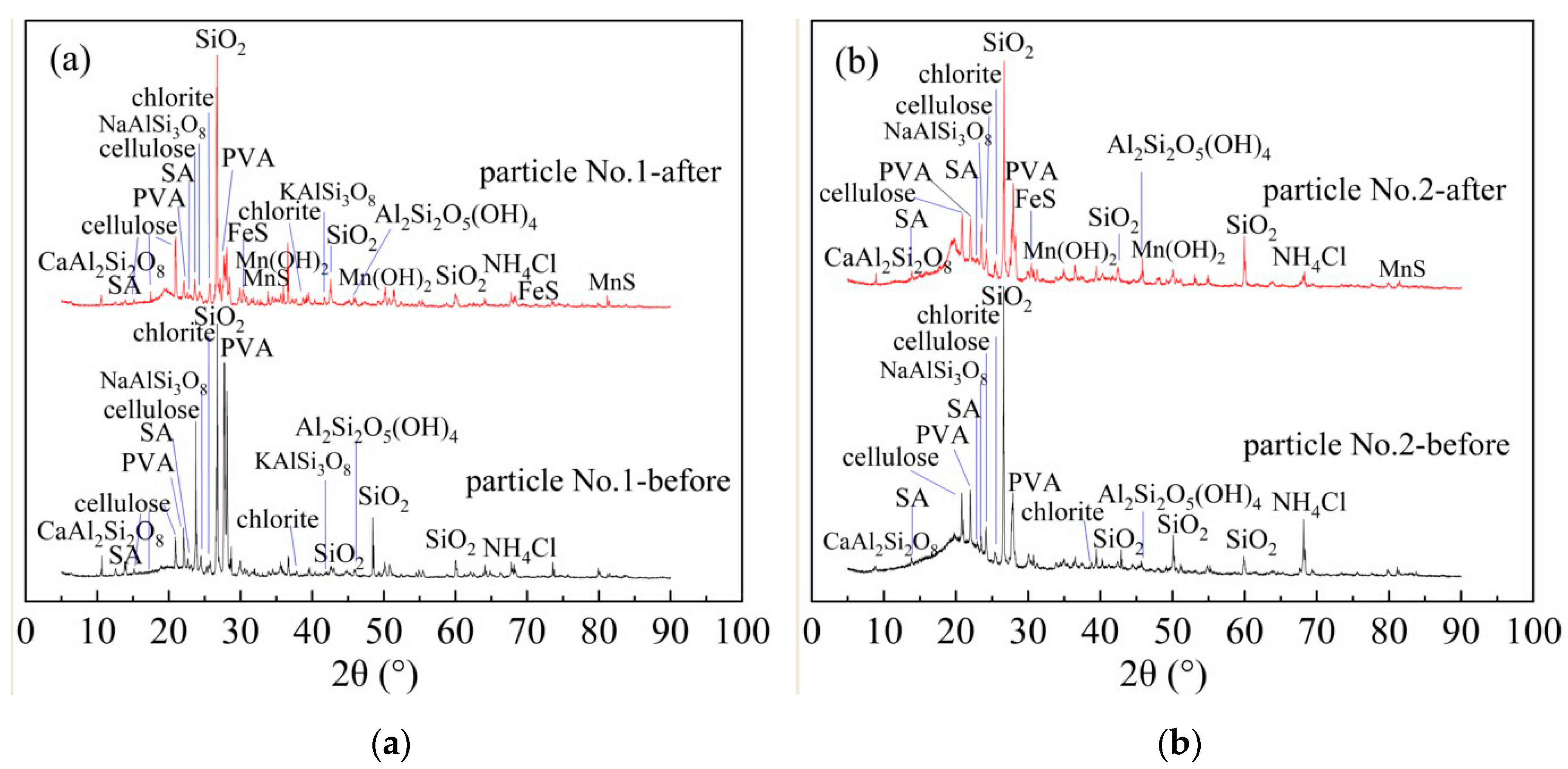
| (a) Comparison of Macroelements of Two Kinds of Medical Stone (%). | |||||||||||||
|---|---|---|---|---|---|---|---|---|---|---|---|---|---|
| Components | SiO2 | Al2O3 | Fe2O3 | FeO | TiO2 | CaO | MgO | MnO | K2O | Na2O | P2O5 | H2O+ | S |
| 1 | 65.19 | 15.36 | 2.34 | 2.01 | 0.54 | 3.88 | 1.72 | 0.13 | 3.31 | 3.67 | 0.22 | 1.11 | - |
| 2 | 71.79 | 15.02 | 0.98 | 0.40 | 0.11 | 1.48 | 1.10 | 0.01 | 3.32 | 4.46 | 0.06 | 1.17 | 0.01 |
| (b) Chemical Composition Comparison of Two Kinds of Medical Stone after Soaking at 20 °C for 48 h. | |||||||||
|---|---|---|---|---|---|---|---|---|---|
| Beneficial and Other Elements (μg/g) | Ca | Fe | Mg | Zn | K | Na | P | Ni | Sr |
| 1 | 2.82 | 1.04 | 1.51 | 0.008 | 9.3 | 23.2 | 0.02 | <0.001 | - |
| 2 | 16.4 | 0.45 | 2.17 | ≤0.007 | 1.47 | 17.9 | 0.07 | <0.005 | 0.09 |
| Toxic Elements (μg/g) | Pb | As | Hg | Cd | |||||
| 1 | <0.002 | <0.005 | <0.001 | <0.0002 | |||||
| 2 | <0.002 | - | - | - | |||||
© 2020 by the authors. Licensee MDPI, Basel, Switzerland. This article is an open access article distributed under the terms and conditions of the Creative Commons Attribution (CC BY) license (http://creativecommons.org/licenses/by/4.0/).
Share and Cite
Dong, Y.; Di, J.; Wang, X.; Xue, L.; Yang, Z.; Guo, X.; Li, M. Dynamic Experimental Study on Treatment of Acid Mine Drainage by Bacteria Supported in Natural Minerals. Energies 2020, 13, 439. https://doi.org/10.3390/en13020439
Dong Y, Di J, Wang X, Xue L, Yang Z, Guo X, Li M. Dynamic Experimental Study on Treatment of Acid Mine Drainage by Bacteria Supported in Natural Minerals. Energies. 2020; 13(2):439. https://doi.org/10.3390/en13020439
Chicago/Turabian StyleDong, Yanrong, Junzhen Di, Xianjun Wang, Lindan Xue, Zhenhua Yang, Xuying Guo, and Mingwei Li. 2020. "Dynamic Experimental Study on Treatment of Acid Mine Drainage by Bacteria Supported in Natural Minerals" Energies 13, no. 2: 439. https://doi.org/10.3390/en13020439
APA StyleDong, Y., Di, J., Wang, X., Xue, L., Yang, Z., Guo, X., & Li, M. (2020). Dynamic Experimental Study on Treatment of Acid Mine Drainage by Bacteria Supported in Natural Minerals. Energies, 13(2), 439. https://doi.org/10.3390/en13020439






